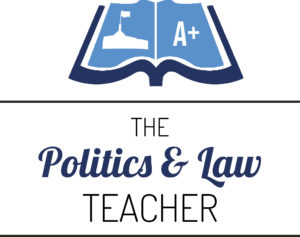Federal Election 2022 – Unit 4
Unit 4 – The accountability of the Commonwealth Parliament – through elections for the House of Representatives
This post refers only to the House of Representatives and the preferential voting system used to elect it. It does not address the accountability of the Senate in the 2022 election.
Students are encouraged to distinguish between elections as a means to hold the parliament to account from their role in holding governments to account.
Parliamentary accountability through elections
Elections are the primary democratic means for holding the Commonwealth Parliament to account. Section 24 of the Constitution stipulates that Parliaments have a maximum three-year term. Sections 7 and 24 specify that both houses must be “directly chosen by the people”. These provisions ensure that parliaments are regularly held to account by eligible electors.
The Commonwealth Electoral Act 1902 governs the electoral and voting systems used to “directly choose” the Parliament. The Act specifies compulsory exhaustive preferential voting for the House of Representatives.
Preferential voting is a majoritarian single-member electoral system used to choose one member per lower house electorate. Single-member electoral systems are robust from an accountability perspective because they allow electors to hold individual MHRs to account, and the House as a whole.
Parliaments are held to account on a range of criteria. These include their conduct, legislative performance, representativeness and capacity to make good governments and hold them accountable.
The 46th Parliament sat between 2 July 2019 and 11 April 2022. During that time several critical issues emerged that led to public criticism of its performance. These issues were the basis of its accountability on election day – 21 May 2022.
The remaking of the House of Representatives
The 2022 election was one of the most remarkable in the history of the House of Representatives. It resulted in a change of government, the largest crossbench in history (16 MHRs), the highest percentage of female MHRs (38%) and demands for improved parliamentary culture and better local representation. It saw the parliament held to account for its failure to legislate meaningful climate policy, improve integrity and its preoccupation with culture wars and identity politics. Above all, electors sent a message that they wanted a better House of Representatives regarding its conduct, legislation, representation and its capacity to form better governments and hold them to account.
One of the defining features of the 2022 election was the election of the largest crossbench in the history of the Commonwealth Parliament. Over 30% of the electorate voted for candidates who did not belong to the major parties. It was the most substantial vote against the two-party system in the House of Representatives since the emergence of disciplined political parties consolidated the two-party system from 1910 onwards.
The size and composition of the crossbench – 10 of the 16 crossbenchers are women – indicate electors want the House of Representatives to be less partisan, less adversarial, less male and more representative of Australia’s diversity. They want it to form better and more inclusive governments and hold them to account more effectively.
The House of Representatives elected on 21 May is 38% female – the highest rate of female representation in its history. It formed a government with a weak majority and a strong incentive to reach across the aisle and work with the crossbench and opposition. It is a vote for consensus over combative politics. The people chose a House of Representatives they hope will act in accordance with parliamentary ideals and theory rather than continue its traditional hyper-partisan practice.
A new force demands a better House of Representatives
A new breed of community independents emerged as a force in the House of Representatives. Called the ‘teal’ independents, they adopted the ‘Voices of Indi’ model of grassroots democracy based on delegate/trustee representation. The ‘teal wave’ washed away six sitting partisan MHRs. They ran on a shared platform of integrity, climate change and improved representation of women. The six new ‘teals’ join the re-elected Zali Steggall and Helen Haines to make up the third-largest bloc in the House. Together, they advocated for a better standard of politics in the people’s house.
The previous House of Representatives failed to hold the Morrison Government to account for it sports rorts and car park funding scandals. It failed to fully debate government legislation, frequently gagging or guillotining debate on bills. Not a single private members’ bill was debated by the House of Representatives in the last Parliament. The ‘teals’ want to strengthen the House’s capacity to hold governments to account and improve its legislative performance. Immediately upon election, they pushed for reforms to Question Time to enhance the House’s role of holding the executive accountable. Additionally, they want Standing Orders amended to increase time for private members’ business, including private members’ bills.
They will likely transform the business of the House, increase its representatives and improve its legislative, representative and responsibility functions.
Culture and integrity
Electors were particularly dissatisfied with the culture of Parliament. The male-dominated, hyper-partisan and adversarial conduct of the House of Representatives led to a significant portion of female electors in wealthy inner-city seats choosing independent female candidates, mainly the ‘teals’. The advocacy of Brittany Higgins and the impact of the 2021 women’s March4Justice were significant factors in this outcome.
Many electors were also dissatisfied with the House of Representatives’ failure to check overt government pork-barrelling. The sports rort’s affair and car park scandals were revealed by the Auditor-General but not adequately addressed by the House according to the expectations of ministerial responsibility. The failure of the House to discipline ministers contributed to a loss of trust in the handling of public money.
Furthermore, on integrity, the 46th Parliament had failed to hold the Morrison Government to account for its 2019 promise to legislate for a Commonwealth equivalent of the States’ independent commissions against corruption. It also failed to legislate Dr Helen Haines’ private member’s bill for an integrity commission. The ‘teal’ independents ran strongly on integrity – promising to support a version of Dr Haines’ bill if elected. They were rewarded by electors seeking better accountability of parliamentarians and government officials.
Climate change inertia
Parliaments since 2007 have failed to take meaningful action on climate change. The issue became part of the culture wars between the left and right. Both major parties became fearful of legislating effective climate change policy fearing a backlash from powerful vested interests like the coal lobby. It led to a wasted decade of climate policy inertia.
Meanwhile, catastrophic bushfires and floods during the tenure of the 46th Parliament raised the issue of climate change in the public mind, especially in fire-devastated NSW and Victoria and flood-ravaged Queensland. For many electors, climate change was the most important election issue.
Electors chose a House of Representatives with a large majority of MHRs promising strong action on climate change. Evidence that the people chose a House of Representatives serious about climate action is the formation of a Labor government promising a legislated 43% reduction of carbon emissions by 2050 and the election or re-election of eight ‘teal’ independents and four Greens MHRs all promising even higher targets. In all 89 MHRs campaigned for a higher legislated emissions reduction target (77 Labor + 8 ‘teals’ + 4 Greens). That is, 59% of MHRs favour stronger climate action.
It was a vote to end the climate wars that dominated the House of Representatives for over 15 years.
Enough of the culture wars
The previous House of Representatives’ preoccupation with fringe issues like identity and the so-called culture wars wore down and frustrated electors. The issue of transgender athletes competing in women’s sports was made an issue by one candidate – Katherine Deves (LIB) in Warringah. Other MPs, including senior members of the former government, joined in on the issue during the campaign.
Electors rejected the divisive and damaging debate outright. It was a factor in increasing the support of moderate candidates across the spectrum. The vote sent a message to the House of Representatives that electors want it to concentrate on issues of mainstream importance and refrain from weaponising vulnerable people for political purposes.
The complete failure of the populist minor parties of the right – the United Australia Party and Pauline Hanson’s OneNation – to win any seats is further evidence that electors chose a House of Representatives that will move beyond these divisive issues.
Listen to us – the importance of local issues
The Greens ran on climate change and better representation of local issues, winning three inner-city Brisbane seats – the so-called ‘Greens-slide’.
Vietnamese-born ‘non-teal’ independent Dai Le won the outer Sydney seat of Fowler against Labor senator Khristina Keneally, a very senior Labor candidate, on the strength of local issues and better representation of the ethnically diverse seat.
Meanwhile, all sitting independents – Zali Steggall, Helen Haines, Andrew Wilkie and Bob Katter – held their seats. So too did the Greens’ leader Adam Bandt and Centre Alliance MHR Rebekah Sharkie.
Local issues dominated the campaigns in many electorates. The Greens won the three inner-city Brisbane seats by door-knocking thousands of homes. Instead of preaching Greens’ policy, they asked constituents what their concerns were. By listening to local people, the Greens discovered a common concern in Brisbane was noise pollution by aircraft flying in and out of the airport. The Greens campaigned on this issue.
Similarly, Dai Le won in Fowler based on local issues. She is a member of the local Vietnamese community and represented the multi-ethnic electorate that felt ignored by the Labor Party. Labor had ‘parachuted’ senator Kristina Keneally into the safe Labor seat in hopes she could enter the lower house. Meanwhile, the ‘teal’ independents adopted the ‘Voices model’ of grassroots electorate-based campaigning pioneered by Cathy McGowan in the Victorian seat of Indi in 2013. The ‘Voices of Indi’ model successfully re-elected Cathy McGowan in 2016 and Helen Haines in 2019. The ‘Voices model’ was adopted by Voices for Warringah to elect Zali Steggall in 2019. The community-based electoral model has now succeeded in electing six more ‘community independents’ – the so-called ‘teals’ – in three States.
It remains to be seen if the House of Representatives of the 47th Parliament can live up to the hopes of electors who have made their choice very clear.

